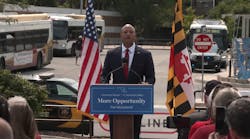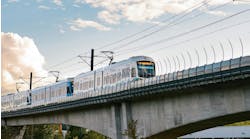MDOT MTA releases technical analysis for six Preliminary Alternatives maps for Red Line project
The Maryland Department of Transportation Maryland Transit Administration (MDOT MTA) has released the technical analysis associated with six Preliminary Alternatives maps made public in late September for the Red Line transit route in Baltimore. Results of the technical analysis support the need for premium transit to improve mobility and access along the east-west corridor.
“The Red Line will have a dramatic, positive impact on communities all along the east-west corridor, and it’s imperative we share ideas and information with residents, officials and stakeholders every step of the way,” said Maryland Transportation Secretary Paul J. Wiedefeld. “Working together, we can make the Red Line a crown jewel of Maryland’s world-class transportation network. I strongly encourage everyone to participate in making that vision a reality.”
Results of the technical analysis highlight the purpose and need for the project and are organized into a series of “measures of effectiveness” based on topics such as ridership, access, travel time, reliability, cost, time to implement and more. The measures enable the public to evaluate and compare the six proposed alternative maps with respect to mode choice – light rail or bus rapid transit (BRT) – as well as tunneling components and alignment. The measures were developed with feedback from stakeholders and the public during open houses and other public engagement activities held during the summer.
MDOT MTA says results of the early analysis suggest each of the six Preliminary Alternatives perform positively across the measures of effectiveness. All the alternatives improve the following elements:
- Access: Providing better access to jobs and employment centers and better mobility for students (ages 5 to 17) and residents.
- Reliability: The Red Line will be reliable by operating in physically separated, dedicated lanes.
- Economic growth: Both light-rail transit and BRT options attract reinvestment and development.
The alternatives demonstrate differences in the areas of:
- Ridership: All alternatives attract sufficient ridership to support an investment in premium transit. Light rail is estimated to have a higher ridership than BRT.
- Travel times: Tunnel options provide an estimated 10 to 15 minutes of travel time savings (along the full length of the line) compared to surface running options.
- Costs: Runnel options are 70 percent more expensive than surface running options.
- Time to implement/risk: Tunnel options increase the overall time to implement.
“The results of the technical analysis reaffirm the Red Line is a critical project for our region,” said Maryland Transit Administrator Holly Arnold. “We look forward to engaging with the public and hearing their thoughts as we continue to advance the Red Line.”
MDOT MTA will be hosting various open houses to hear public feedback of the technical analysis. The open house schedule, as well as the full technical analysis report, is available on MDOT MTA’s website.


